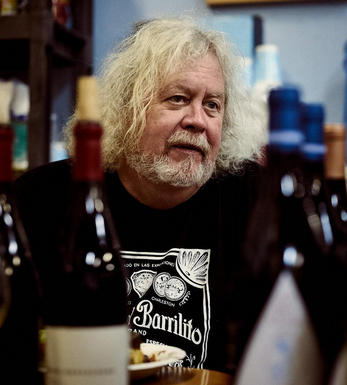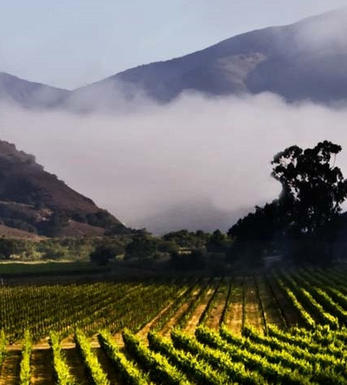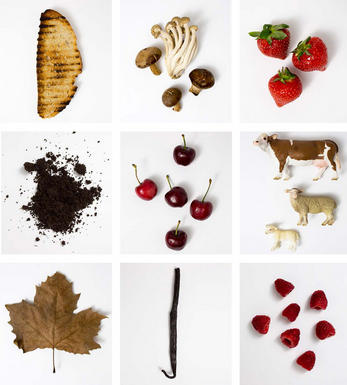
2018 Au Bon Climat, Knox Alexander, Pinot Noir, Santa Maria Valley, California, USA

Critics reviews
Jeb Dunnuck, jebdunnuck.com (August 2022)
Matt Kettman, Wine Enthusiast
About this WINE

Au Bon Climat
The late Jim Clendenen founded Au Bon Climat (ABC) in 1982. He became famous for making pioneering wines from Pinot Noir and Chardonnay on California’s Central Coast. He passed away in 2021 and is remembered as one of the most charismatic and influential people of his vinous generation.
Jim’s passion for wine was born from a trip to Burgundy in the mid-1970s when he studied Law at UC Santa Barbara. During subsequent visits, his enthusiasm for Pinot Noir and Chardonnay grew, and he became convinced that the Californian hills were capable of something special with these two noble varieties.
Au Bon Climat translates as “a well-exposed vineyard”, a name that suits the vineyards’ coastal position, with its benevolent Pacific fog and cooling breeze. Making the most of these conditions, ABC buy clones from Burgundy. This contributes to creating wines that emulate Europe’s restraint and finesse but with a magic touch of New World flair.
The vineyards ABC source their grapes from read as a ‘who’s who’ of Central Coast vineyards. Bien Nacido and Jim’s “Le Bon Climat” are the most significant contributors. The influence of the Pacific can be felt standing in the canyon of Bien Nacido, where the warm days and cool nights characterise this superb terroir. Le Bon Climat, in contrast, consists of mainly hilltop vineyards which were certified organic in 2003.

Santa Maria Valley
Located in Santa Barbara County, California, Santa Maria Valley is known for its unique climate, known as the Santa Maria Valley AVA (American Viticultural Area), which significantly influences the winemaking process and the resulting wines.
The climate is typically cool and moderate, strongly influenced by the nearby Pacific Ocean. The region experiences a combination of maritime and inland influences, with foggy mornings, mild days, and cool evenings. This unique climate helps to preserve the natural acidity and delicate flavours of the grapes, making it ideal for producing high-quality wines.
Several grape varieties thrive in the region, with Pinot Noir and Chardonnay being the most prominent. Pinot Noir grapes benefit from the region’s cooler climate, producing wines with complexity, elegance, and bright red fruit flavours. Chardonnay grapes also flourish in the Valley’s climate, producing wines with crisp acidity and balanced flavours.
The Winemakers focus on minimal intervention and sustainable practices, allowing the unique characteristics of the grapes and terroir to shine through in the wines. Many wineries employ traditional winemaking methods, including hand-harvesting the grapes and using open-top fermentation vessels for red wines. Some producers also use oak ageing to add complexity and texture to their wines.
The Santa Maria Valley is home to several notable wineries and vineyards, each contributing to the region’s reputation for producing exceptional wines. One of the most renowned wineries in the area is Au Bon Climat.

Pinot Noir
Pinot Noir is probably the most frustrating, and at times infuriating, wine grape in the world. However when it is successful, it can produce some of the most sublime wines known to man. This thin-skinned grape which grows in small, tight bunches performs well on well-drained, deepish limestone based subsoils as are found on Burgundy's Côte d'Or.
Pinot Noir is more susceptible than other varieties to over cropping - concentration and varietal character disappear rapidly if yields are excessive and yields as little as 25hl/ha are the norm for some climats of the Côte d`Or.
Because of the thinness of the skins, Pinot Noir wines are lighter in colour, body and tannins. However the best wines have grip, complexity and an intensity of fruit seldom found in wine from other grapes. Young Pinot Noir can smell almost sweet, redolent with freshly crushed raspberries, cherries and redcurrants. When mature, the best wines develop a sensuous, silky mouth feel with the fruit flavours deepening and gamey "sous-bois" nuances emerging.
The best examples are still found in Burgundy, although Pinot Noir`s key role in Champagne should not be forgotten. It is grown throughout the world with notable success in the Carneros and Russian River Valley districts of California, and the Martinborough and Central Otago regions of New Zealand.


Buying options
Add to wishlist
Description
Sweet strawberries and red cherries dominate the nose, mixed with a touch of vanilla and spice. The 2018 is beautifully light on its feet, with a high kick of tangerine sharpness. Gorgeous acidity brings freshness and layers of toasty minerality. The tannins are pert, fresh and delightful, easing away into a savoury-embedded finish. There is light in this wine; it feels almost crystalline and just dances with energy. A ripe cranberry character with a redcurrant purity dominates on the long finish, which lingers on notes of wet stone and cured meat.
Drink now to 2038.
Catriona Felstead MW, Senior Wine Buyer, Berry Bros. & Rudd (Sep 2021)
wine at a glance
Delivery and quality guarantee